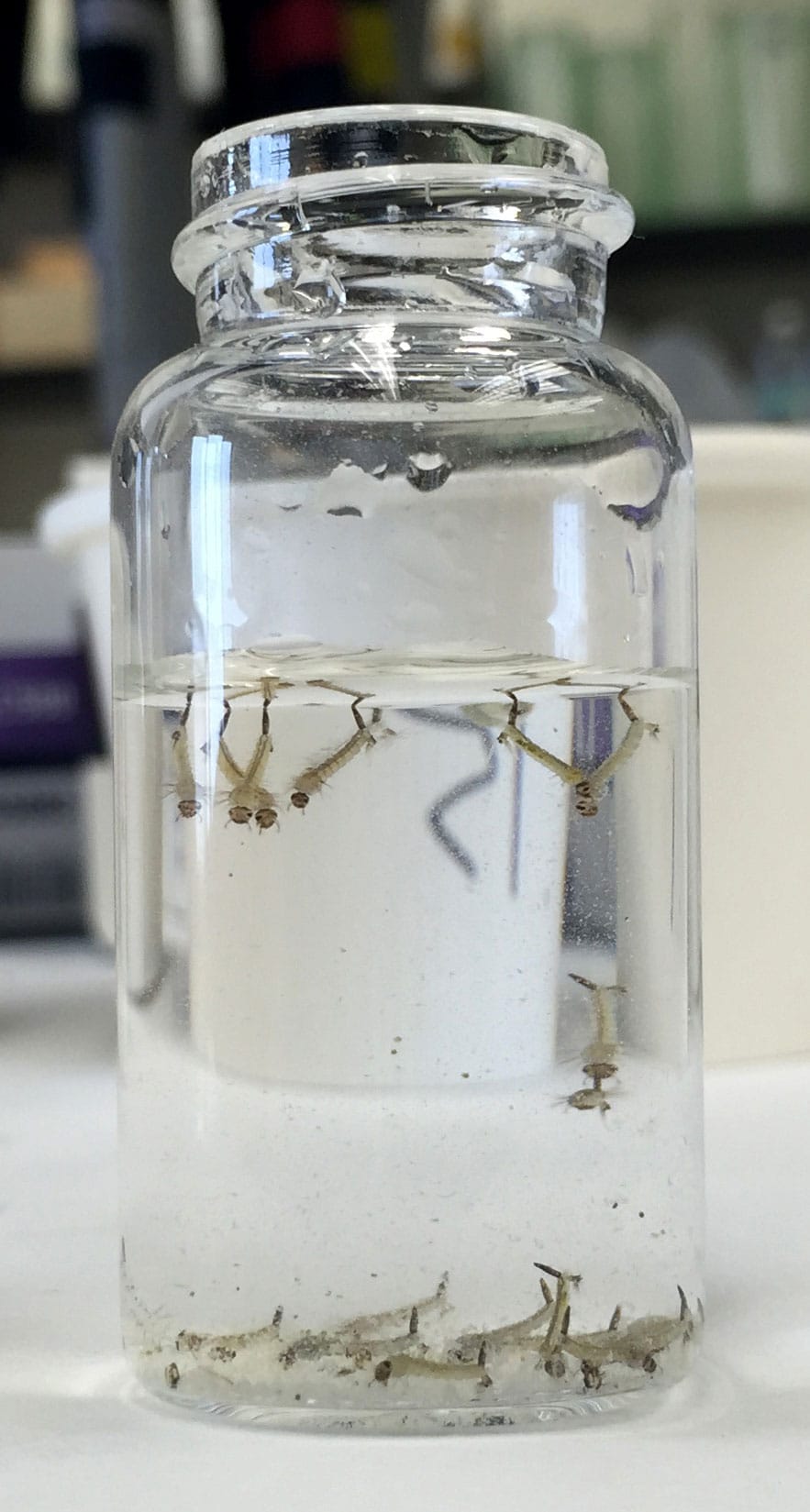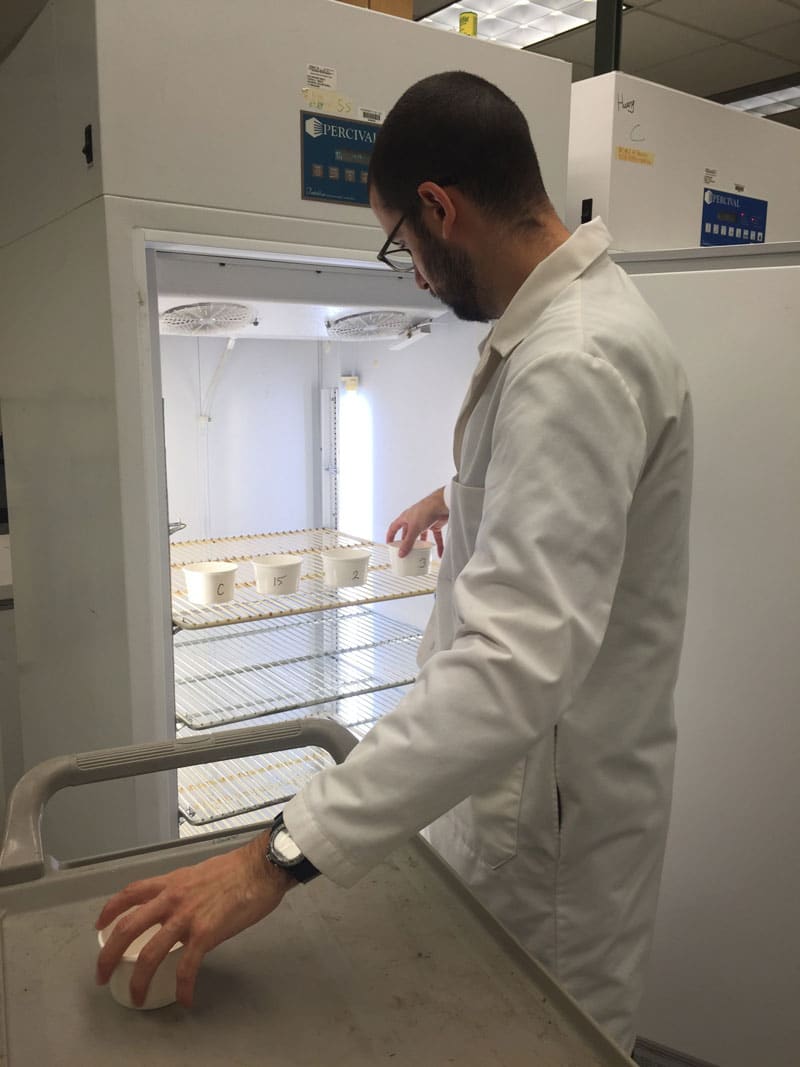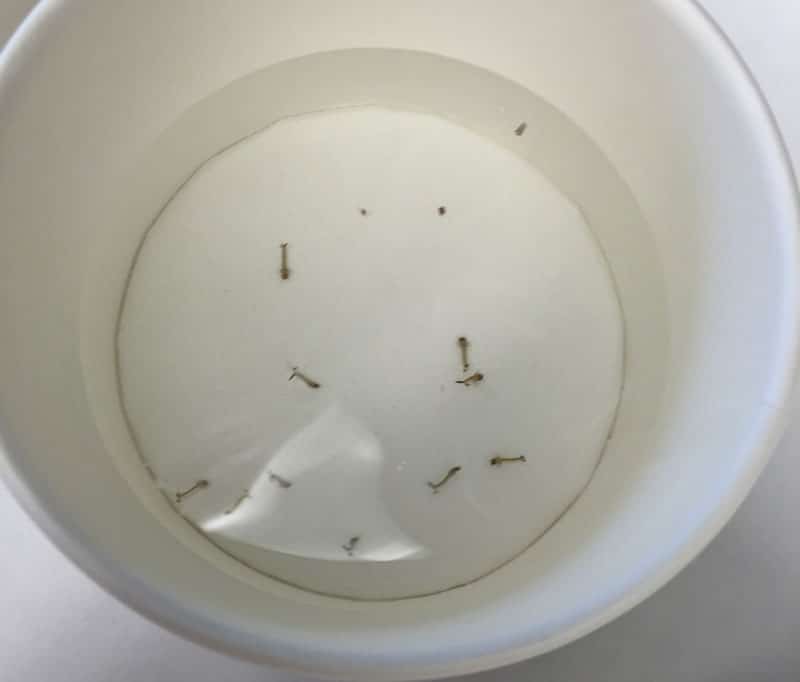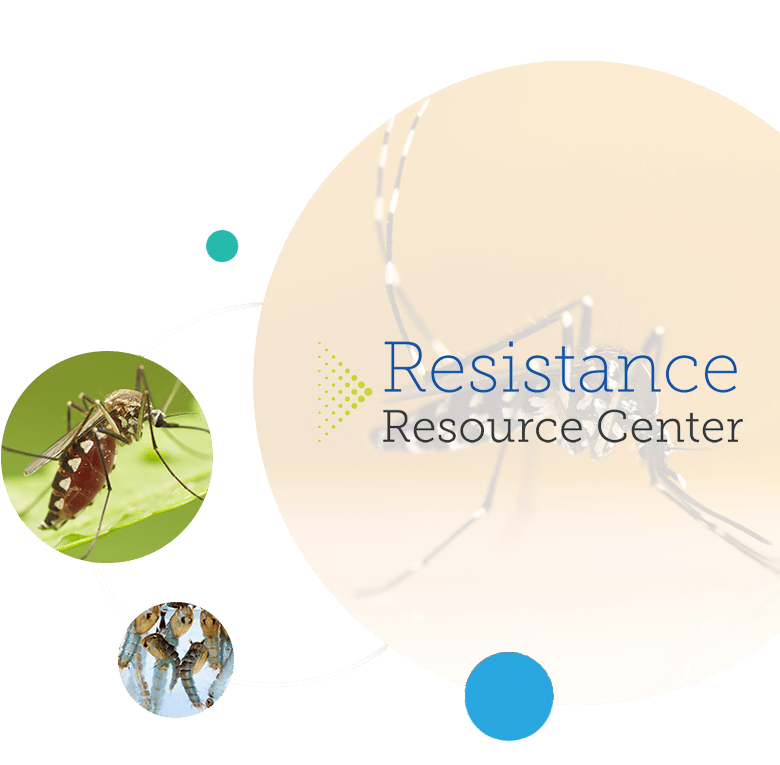Larvicides are our first line of defense in mosquito control. Application of larvicides and combatting mosquito populations while they are confined in a single habitat, and are not biting/flying adults, will reduce populations and alleviate the stress on adulticides (and your constituents). The use of larvicides for mosquito control falls into the larger picture of integrated mosquito management. In addition to having a plan for adulticide rotation, emphasis on your larvicide program can aid in resistance management. Larvicides have a greater number of active ingredients to choose from within three classes and some even provide intrinsic resistance management, reducing the likelihood of developing resistance to larvicides.
Routes of Toxicity for Larval Control
There are various ways that larvicides act on mosquitoes. The important thing to remember with larvicides is that we treat the water in which they reside, NOT the larvae specifically. There are larvicides that must be ingested or eaten by larvae. These are our bacterial larvicides, Bacillus thuringiensis israelensis and Lysinibacillus sphaericus. Next, there are larvicides that act by just coming into contact with mosquito larvae. These are primarily the insect growth regulators, such as (S)-Methoprene. The last route is the larvicides that can act via ingestion or by contact, which are the Spinosad products.+
- Larvicides that must be ingested or eaten
- Bacillus thuringiensis israelensis
- Lysinibacillus sphaericus
- Larvicides that work by contact with mosquito larvae
- (S)-Methoprene
- Pyriproxyfen
- Larvicides that work both ways by being ingested or by contact
- Spinosad


Sporangia of Lysinibacillus sphaericus Source

(A) Sporulating cell of Bacillus thuringiensis israelensis and (B) individual toxin inclusions and their toxin composition. Sp, spore; E, exosporium; PB, parasporal body. Source
As previously mentioned, there are three different classes of larvicides: bacterial larvicides, insect growth regulators and spinosad’s. Bacterial larvicides are fermentations of solid sand solubles of whole bacterium containing insecticidal crystal proteins (ICP), which bind to the midgut disrupting digestion and fluid balance. Eventually, the midgut will rupture leading to septicemia and death. Insect Growth Regulators (IGR) are purified compounds that act as a juvenile hormone analog that is specific to insects that undergo complete metamorphosis. The IGR mimics high levels of juvenile hormone to prevent larvae/pupae from developing into the next instar or pupal stage. The last class is the spinosads, which are metabolites of bacterial fermentation Spinosyn A and Spinosyn D. Spinosads act as neurotoxins specific to invertebrates by binding to the nicotinic acetylcholine receptors, which causes excitation of nerves leading to involuntary muscle contractions and death.
| AI Compounds | Mode of Action | Activity Spectrum | Target Specificity |
|---|---|---|---|
| Lysinibacillus sphaericus | Mosquito-specific insecticidal crystal proteins that bind to midgut | Some mosquito species | Very High |
| Bacillus thuringiensis subsp. israelensis | Nematocera-specific insecticidal crystal proteins that bind to midgut | Mosquitoes, black flies, and closely related flies in Order Diptera: Suborder Nematocera | Very High |
| (S)-Methoprene | JH analog is specific to insects that undergo complete metamorphosis; inhibits emergence | Insects that undergo complete metamorphosis | High |
| Pyriproxyfen | JH analog is specific to insects that undergo complete metamorphosis; inhibits emergence | Insects that undergo complete metamorphosis | Moderate |
| Spinosad | Neurotoxin specific to invertebrates binds to nicotinic acetylcholine receptors causing excitation of nerves, leading to involuntary muscle contractions | Insects and other invertebrates including some Crustacea and Mollusca | Moderate |
Resistance: What is it? Why is it important?
‘A heritable change in the sensitivity of a pest population that is reflected in the repeated failure of a product to achieve the expected level of control when used according to the label recommendation for that pest species’ – Insecticide Resistance Action Committee, IRAC
Insecticide resistance within mosquito control is a constant and growing problem. Unfortunately, our mosquito control toolbox is dwindling and only have two classes of adulticides available: Organophosphates and Pyrethroids. If a population develops resistance to one of these actives, then those products can no longer be used effectively to mitigate disease or nuisance problems and reduces the options for control tremendously. Due to the lack of chemistries of our adulticides, we must place a larger emphasis on larvicides. As shown above, we have five different active ingredients to treat larval habitats. Rotating between chemistries regularly and utilizing all the tools in the toolbox will prevent resistance from developing.


Similar to adulticides, overuse or sublethal dosing of larvicides can cause mosquito populations to develop tolerance and eventually resistance to some active ingredients. Lysinibacillus sphaericus, Spinosad, and (S)-methoprene have all been documented in academic and operational literature to have caused resistance in populations. However, the “magic bullet,” or Bacillus thuringiensis israelensis, has been used to combat resistance to these products and eventually return mosquito populations to larvicide susceptibility. According to the EPA, there is no evidence of documented resistance to Bti in its 30+ years of use, which is likely due to the synergistic nature of the four protein toxins, also known as the ICP’s.
How do we detect resistance?
There are a couple of ways to detect larval resistance to larvicides. Most often, districts and research labs utilize the conventional cup larval assay. Another option if you have a larger outdoor area instead of a temperature-controlled environment, you can use a bucket or pool assay. These are larger bodies of water, which will mimic a field environment, similar to an actual storm drain treatment. Microplate assays are typically only used in an academic research lab to detect metabolic resistance. This specific assay is used for Temephos, which is an organophosphate larvicide that is no longer available in our market.
It is recommended that you should conduct your larval bioassays, with your local populations, once or twice a year with each of the active ingredients that is used operationally in your district. However, if you notice that control has failed to reduce mosquito populations in the field, it is recommended that you immediately do a larval bioassay to determine resistance status. If mosquitoes in your area have a history of genetic resistance to larvicides, or a particular active ingredient, it is recommended that you do additional bioassay testing increasing it to three or four times a year.
What can we do about resistance?
The first line of defense to handle resistance is preventing it. In order to prevent resistance, you must be vigilant when it comes to rotation and monitoring of your field populations. Rotation of your chemistries will prolong the life of that product ensuring its effectiveness for years to come. By continuously monitoring your local field populations, you can stop a problem when it first appears instead of letting it become a larger issue. If your population is showing resistance to Lysinibacillus sphaericus, Spinosad or (S)-methoprene, immediately switch to Bacillus thuringienses israelensis and continue to use this product for the next several life cycles to increase susceptibility to the other actives. Use other methods of Integrated Mosquito Management (IMM) when applicable, which includes source reduction, physical control, and adulticide control when you have flying, biting adults.
Have Questions? We’re here to help!
Azelis A&ES has entomological and technical experts that will work with you to identify the appropriate solution to control nuisance and vector mosquitoes in your region. Our mission in integrated mosquito management is to assist you with preserving public health.
Talk to one of our experts to get started today!
